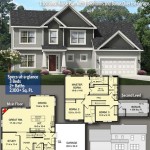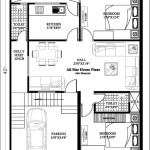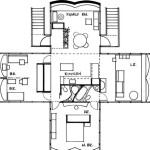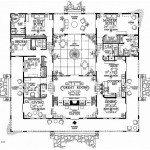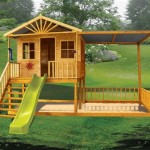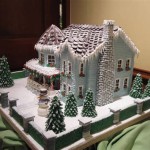Making Floor Plans in SketchUp: A Comprehensive Guide
Sketchup is a powerful and intuitive 3D modeling software that has become a popular choice for architects, designers, and homeowners alike. One of its most useful features is the ability to create detailed floor plans. Floor plans are essential for visualizing the layout of a space, planning furniture placement, and communicating design ideas effectively. This guide will provide a comprehensive overview of how to make floor plans in SketchUp, covering essential tools, techniques, and tips for achieving professional results.
Understanding the Basics:
Before diving into the specifics, it's essential to understand the fundamentals of SketchUp's interface and how it works. Here are some core concepts:
- Drawing Tools: SketchUp provides various drawing tools like lines, rectangles, circles, and arcs, allowing you to create the foundation of your floor plan.
- Push/Pull Tool: This powerful tool allows you to extrude 2D shapes into 3D forms, essentially turning basic shapes into walls, furniture, or other elements.
- Layers: SketchUp's layering system helps organize your design by separating different components into distinct groups. This makes it easier to manage and edit the plan.
- Components: Components are pre-designed objects you can insert into your model, such as doors, windows, furniture, and appliances. This saves time and effort compared to creating everything from scratch.
- Styles: SketchUp offers different styles for viewing your model, including wireframe, shaded, and rendered views. These styles allow you to adjust the visual representation of your design.
Creating the Floor Plan:
Now, let's embark on the process of creating a floor plan within SketchUp:
- Start a New Project: Open SketchUp and select "New" to start a fresh project. Choose a suitable template based on your needs (e.g., metric or imperial units).
- Draw the Walls: Use the "Line" tool to draw the exterior walls of your space. Make sure to connect the lines to form a closed shape.
- Use the Push/Pull Tool: Select the "Push/Pull" tool and click on one of the wall lines. Drag the tool upwards to create a solid wall with height. Repeat this process for all walls.
- Add Doors and Windows: Utilize the "Rectangle" tool to draw rough outlines for doors and windows. Then, use the "Push/Pull" tool to create depth. You can find pre-designed door and window components in SketchUp's 3D Warehouse or import your own.
- Add Interior Features: Draw interior walls, partitions, or other features using the "Line" and "Push/Pull" tools. Create furniture and fixtures using the "Rectangle," "Circle," or "Arc" tools and the "Push/Pull" tool.
- Use Layers: Organize your floor plan by grouping related elements into layers. For example, you can create a layer for walls, another for furniture, and another for fixtures. This makes it easier to manage and edit your design.
- Adjust the View: Switch to the "Parallel Projection" view using the perspective controls in the toolbar. This ensures that your floor plan is displayed in a two-dimensional, top-down perspective.
Making the Plan More Detailed:
Once you have the basic layout in place, you can enhance your floor plan by adding details and features. Here are some techniques:
- Adding Dimensions: Use the "Tape Measure" tool to display precise measurements of your floor plan. This is essential for communicating accurate information about the space.
- Adding Textures: Apply materials to walls, floors, and furniture to add visual interest and realism to your plan. SketchUp offers a wide variety of built-in materials, or you can import custom textures.
- Using Components: Utilize pre-designed components from SketchUp's 3D Warehouse to efficiently add doors, windows, furniture, appliances, fixtures, and other common elements. This can significantly speed up your workflow.
- Creating Custom Components: If you require unique or specialized elements not available in the 3D Warehouse, you can easily create your own custom components using SketchUp's tools.
- Adding Text: Incorporate text to label rooms, indicate furniture types, or provide additional notes and instructions. This can make your floor plan clearer and more informative.

Layout Floor Plan Pro Sketchup Community

How To Make Floor Plans For Free In Sketchup

2d Floor Plans Without Drawing The 3d Object Pro Sketchup Community

Draw Floor Plan With Sketchup Tutorial

Making Unique Floor Plans Skill Builder

Layout Floor Plan Pro Sketchup Community

Expert Tips On How To Create A Professional Floor Plan Sketchup Hub

Layout Floor Plan Pro Sketchup Community

Free Floor Plan Sketchup Review
Creating A 2d Plan Of Your Sketchup Model In Layout Blog

